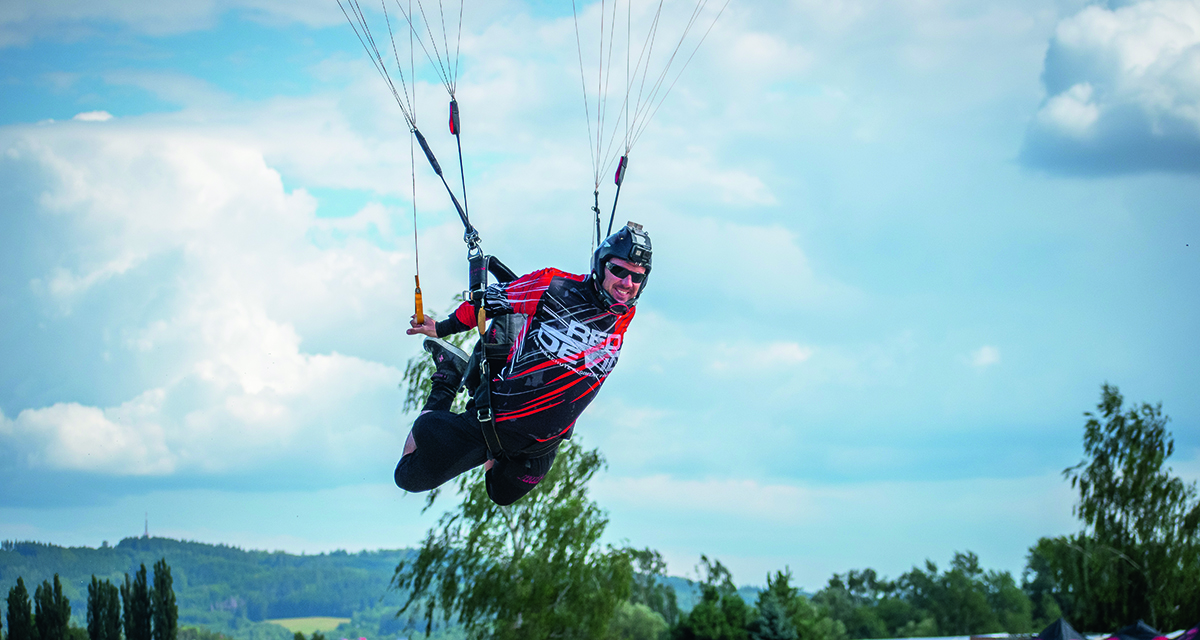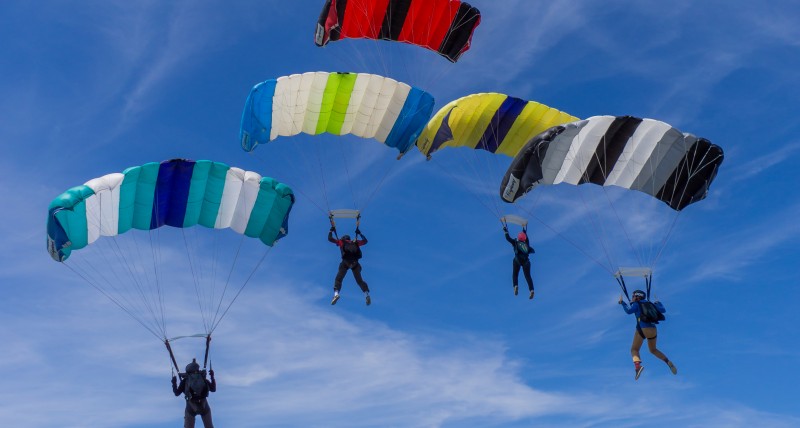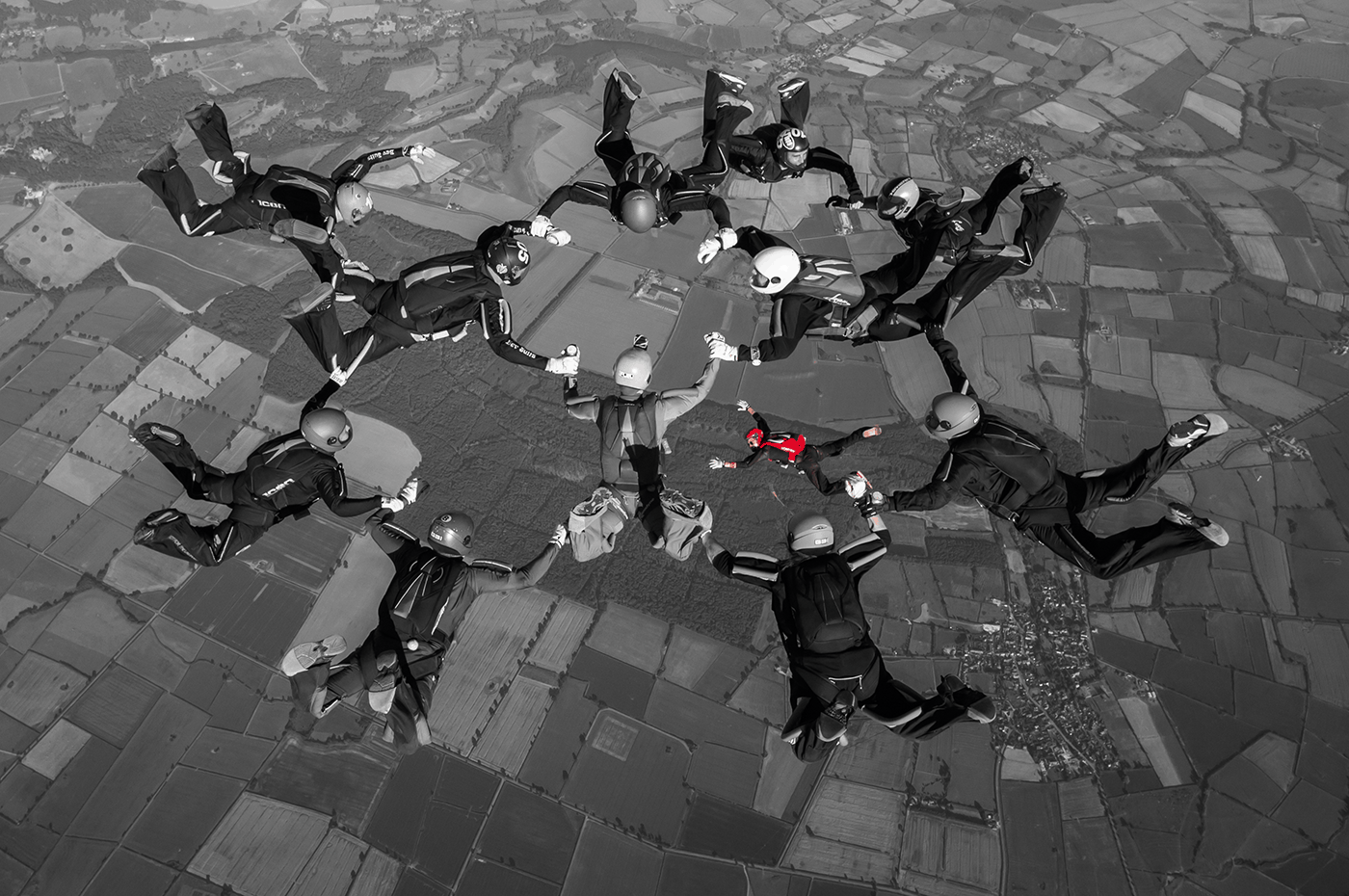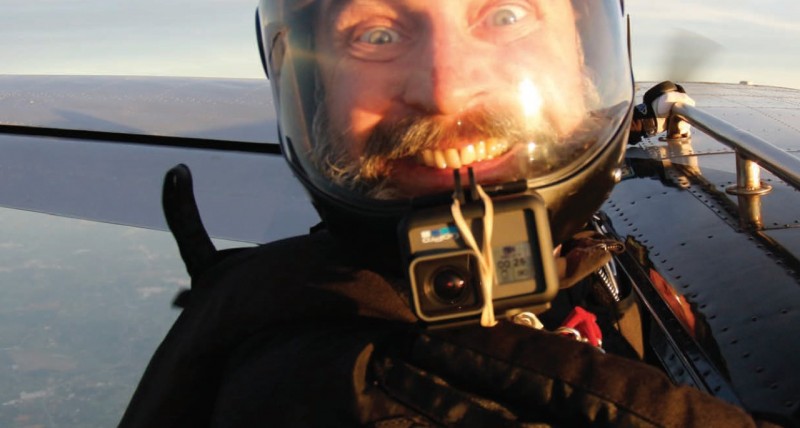The importance of progression when flying smaller wings
So there I was! Just opened up ‘a little low’ from an awesome jump on my Velocity 96, way off the wind line and deep. At this point I hadn’t had much experience with an RDS (Removable Deployment System). I flew to my setup point whilst putting my RDS down the front of my jumpsuit. I just made it over my intended landing area, slightly lower than my normal turn height. I initiated a 270-degree turn, got to the 180-degree point and my RDS caught air, flew out the top of my jumpsuit and covered my face. Oh sh*t!
I went into survival mode: swiped away the RDS, grabbed a rear riser with a toggle in my other hand and flared. I was now flying downwind, into long grass with uneven ground. As I came to a standstill I couldn’t believe I wasn’t hurt. I then realised how things can quickly escalate out of your control. I got away with that one!
Why is flying high-performance wings attractive?
To look cool? Get down first? Smaller rig on your back? Your mates jump them? You found a good deal? Be part of the sub 100 gang? Because you can fly head down?
None of the above is a good reason to start flying high-performance wings. There is a long road through progression – theory and practical – when it comes to canopy piloting.
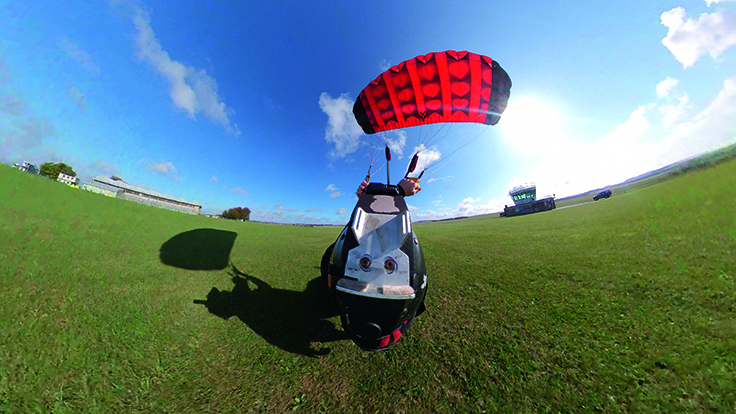
Just like when you learn any skydiving discipline, it takes time, effort, dedication, research, and most of all good coaching. There are so many people out there these days that are spending an absolute fortune in the wind tunnel because they want to be that sky ninja, yet not investing in their own personal canopy flight development. You don’t simply rock up at the tunnel and start flying 4-way dynamic lines, right!? To do that at a high level takes hundreds (if not thousands) of hours of tunnel flying. The same principles apply in CP, we start off learning at slower speeds (bigger wings), then progress onto higher speeds (smaller wings).
Most people are happy that the parachute is just a means back to planet earth safely. But there are a lot of us (including me!) who feel that when that pilot chute is thrown the fun starts. We all love freefall and want to improve our skills every jump we do – we all have goals!. The way we do that is either to jump with friends that are badasses OR pay for a coached jump. We should treat canopy flight the same, if not more so, as this is where the injures and fatalities generally happen.
Not as much time as you think!
You always assume that you get a shed load of canopy time after every jump, but the reality of it is that you don’t. The jumping we do these days is generally in a group and we are normally tracking or freeflying. So the separation is generally not great on breakoff and we are conflicting with the other groups that have just jumped from the same plane (which will probably have another tracking group on). From opening until landing we are looking out for others, getting into some sort of stack, making sure we fly a predictable pattern and so on. So the time you actually get to learn how your canopy flies is very minimal.
Let’s say you get ten seconds from the start of your turn to feet on ground. Over 100 jumps that’s only 16 minutes of practising your turn, which is not long at all – we can fly 60 minutes of tunnel in a day easily! Alongside that you are not getting your landings filmed or getting a debrief from every jump you do. So you can easily see how your freefall skills can overtake your canopy skills very quickly. Even the world’s best canopy pilots are still finding new ways, techniques and new kit that is developing swooping.
Lightning to Peregrine
In 2011 when I accumulated 50 jumps I was privileged to downsize to a Lightning 193. I was quickly introduced into using front and rear risers whilst learning CRW. Flying relative and docking onto other canopies so early on gave me lots of knowledge and confidence in canopy flight, even though it was a 193. 100 jumps later and I downsized to a Triathlon 175. This thing felt like a rocket compared to the Lightning and I really learnt a lot on this canopy from front riser landings to flying 200 sq ft flags – and of course more CRW.
At the end of the 2012 season and after 300 jumps on the Triathlon, I was told I was ready to move onto a Sabre 1 135 under supervision (Thanks Mark Scobie). This was a big deal for me as I see the Sabre as a swooping machine – well, it was and still is!
Fast forward 1,100 jumps and a downsize to a Sabre 2 120, I was generating every bit of performance out of it that I could. I was confidently throwing 270-degree turns into every display arena. I knew by now I wanted to fly high-performance canopies, so at around 1,500 jumps and three years in the sport I started to downsize onto cross-braced canopies under the watchful eye of my Coach and good friend Alexis McNaughton. Up until now I have been full time in the sport and super current.
I went through an FX 105, PD Velocity 96, Velocity 90 and Valkyrie 84 to my current canopies: a Valkyrie 79 and Peregrines 71 and 67. Before switching canopies I made sure I was flying each of them at their maximum performance with a full RDS, doing 450-degree turns, in all wind directions. Nailing that perfect 90-degree turn into wind is just the start!
Is Canopy Piloting for everyone?
At the 2019 CP World Cup in South Africa there were a total of 87 competitors that attended. That’s 87 people in the world of skydiving flying at a competitive level – that’s quite a low number, right? There are obviously more talented canopy pilots out there that choose not to compete. Some like to keep it fun-based, but those guys (and girls) will probably work at a DZ, load organise etc, so they remain super current on the canopies they are flying. Also attacking a set of gates in competition is totally different to swooping DZ control…
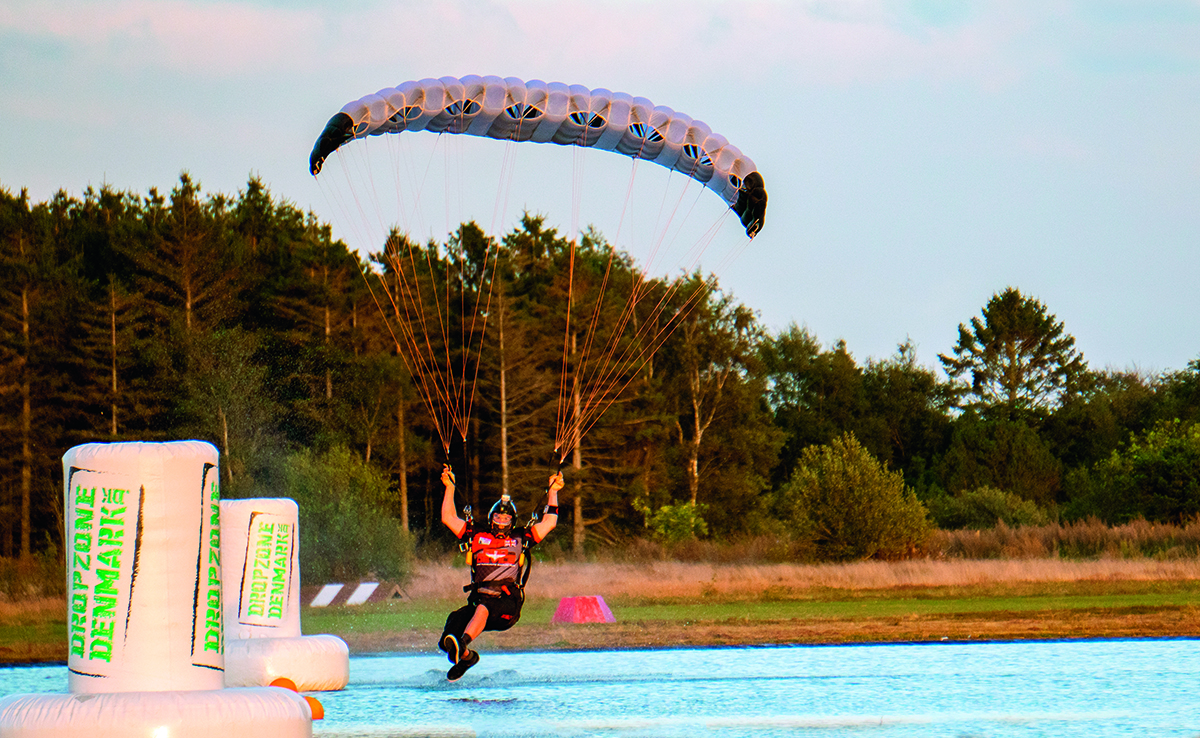
Everyone has a different thinking process and physical abilities. There are also gross and fine motor skills that come into play, which is how the body’s muscles move and act. A good judge of someone’s motor skills can be found in driving. You have to use judgements in speed, stopping distances, turning the steering wheel, pressing the pedals, changing gear, talking to people in the vehicle all at the same time, whilst remaining smooth and in control. These same principles apply to swooping. There is a lot going on when we dive fast parachutes at the ground. There are many calculations in a short amount of time and if you get them wrong it can end up catastrophic. This is not to scare people off swooping but to educate them on what they potentially want to get into.
I believe everyone should take at least one canopy course after they pass their AFF and then one course for every canopy they downsize. On top of that if anyone has had a long time off jumping (that’s most of us in the UK right now) I would highly recommend taking a couple of canopy courses to get back up to speed on your skills and safety. Having that extra knowledge could be lifesaving at some point in your skydiving career, even if you are not learning to swoop.
How do I get into swooping?
Coaching is how! Having that extra pair of eyes on your landings from a well-respected canopy coach will be a game changer and the progression will be much faster (and safer) than trying to figure it out for yourself. A good coach will drive their student forward and guide you at their best speed possible without compromising on the safety and managing the risks at every stage. I would love to see more canopy pilots come through on the UK scene; the last couple of UK CP Nationals have been great and the numbers are slowly growing. We encourage all those that are looking to compete in CP to speak to your Chief Instructor and get yourself up to speed with the British Skydiving canopy sizing charts. You can find the new charts on the British Skydiving website or download the free apps.
We all have goals when it comes to skydiving. Think about what you want and make the right decisions. Jumping smaller wings raises the risk of injury or even death, but if you get the correct coaching and progress in the right way it is very rewarding. There are many canopy courses out there to gain the correct knowledge, but you’re going to have to practise over and over to build up those skills in your toolbox. Repetition, repetition, repetition. Stay humble, listen to the experienced, know your limits and know when to say NO!
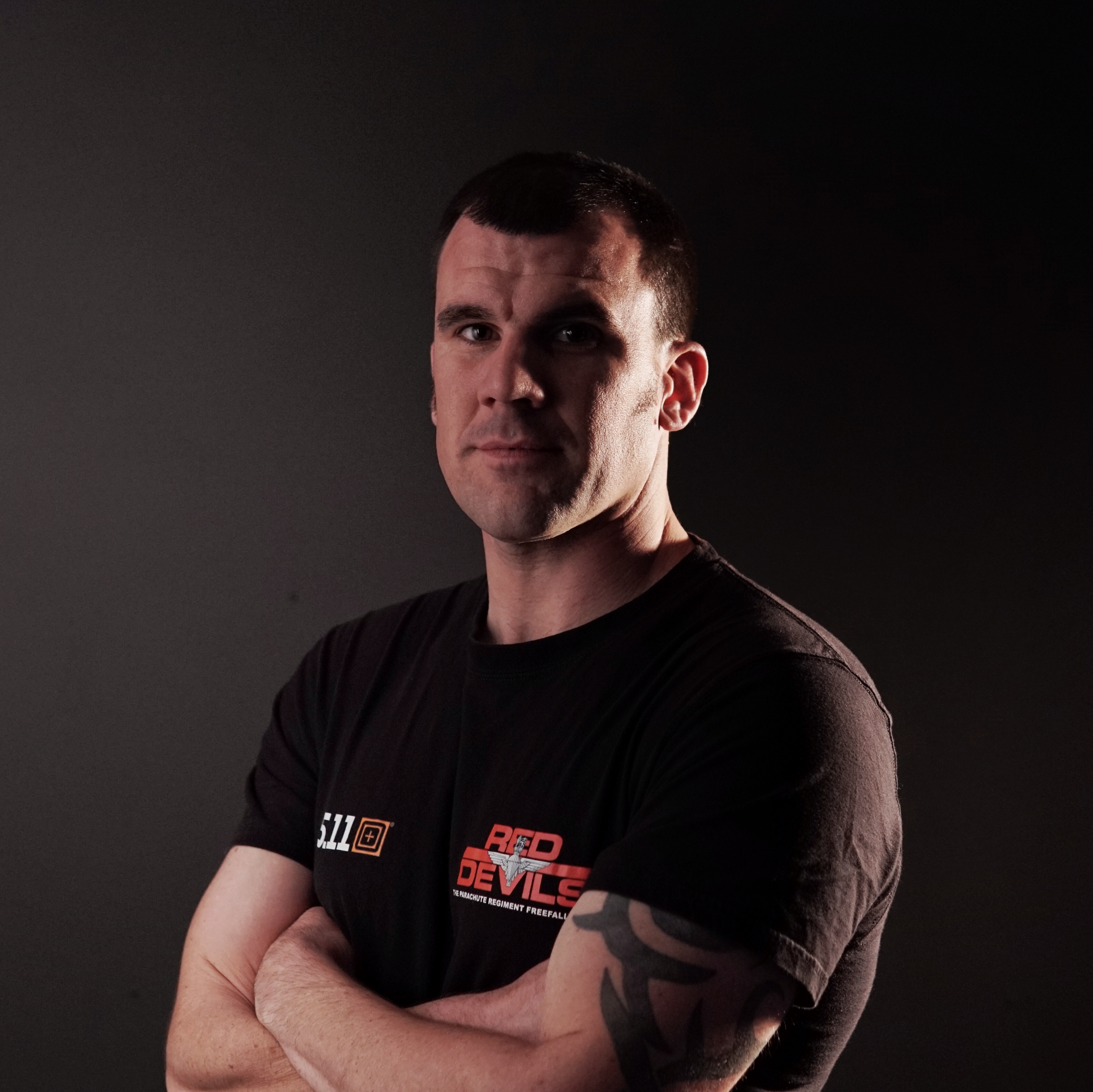 By Lee Crudgington – Red Devils
By Lee Crudgington – Red Devils
Lee Crudgington would like to thank: The Red Devils Army Parachute Display Team; Support Our Paras; The Army Sports Control Board; Jedi Air Wear; Cypres; Cookie Helmets; Sun Path Products; and L&B Altimeters.
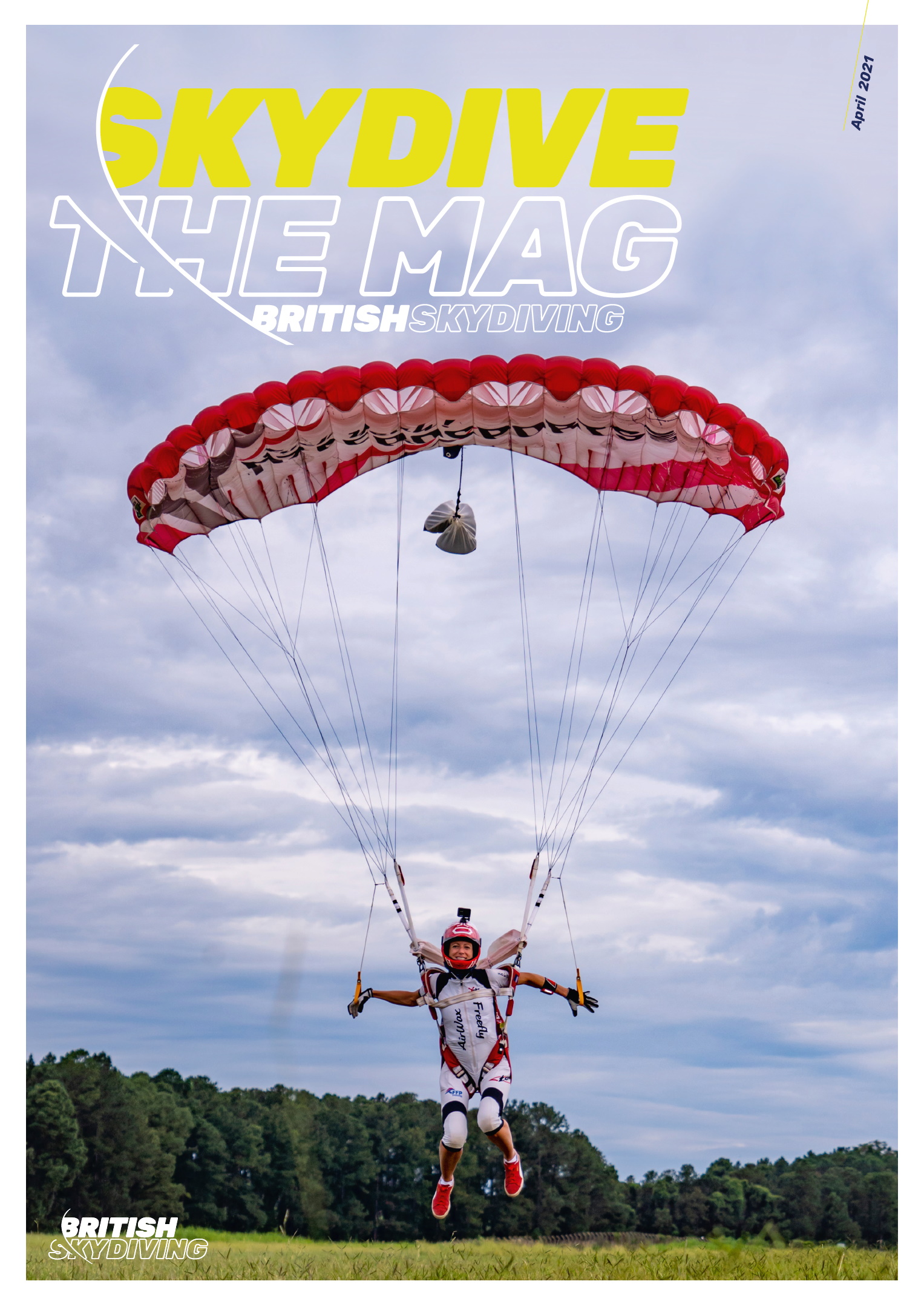 First published in the April 2021 issue of Skydive the Mag.
First published in the April 2021 issue of Skydive the Mag.
Photos: Main Image & Attacking Gates by Emma Reynolds


